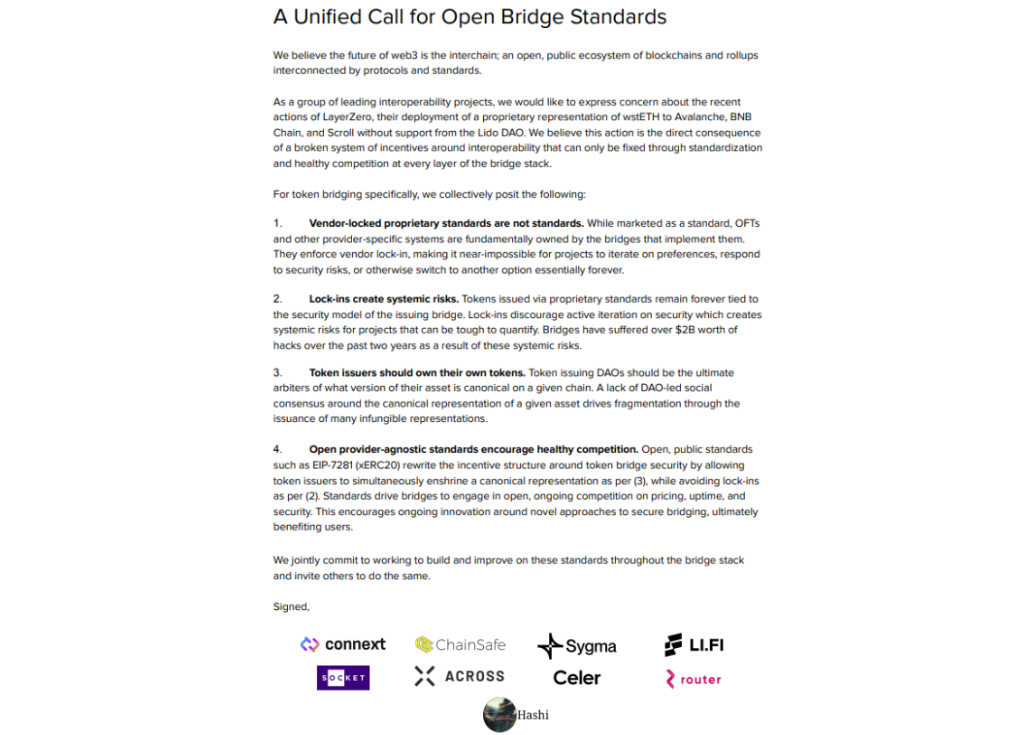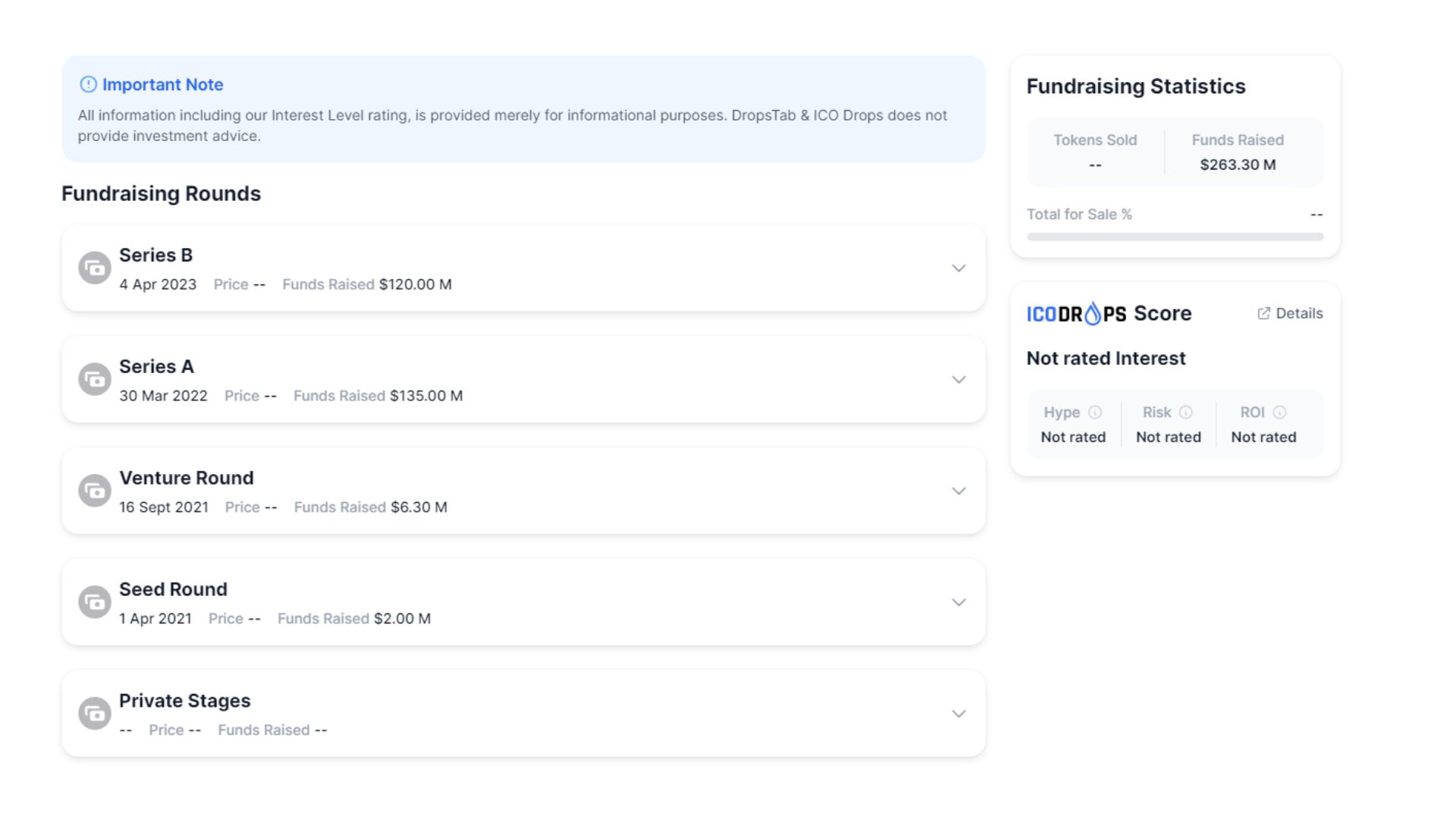Connext Network announced a Bridge alliance to make the xERC-20 Token standard a commonly used Token type. This alliance includes famous projects in the Bridge segment, they also aim to compete directly with LayerZero.
So what are the details about this alliance? Let’s find out in this article!
Overview of Connext Network
Connext Network is a protocol that connects to networks to transmit messages across chains through root bridges such as Polygon Bridge, Optimism Bridge, Arbitrum Bridge, etc. It combines bridges to bring messages from this chain to the other chain in the safest way.
Using native bridges, cross-chain transactions will be validated and stored on 1 or 2 chains, usually Ethereum. But it faces the problem of high fees and slow transactions, which is also the project’s trade-off for security.
Essentially, this protocol can support the same features as LayerZero. It is also possible to develop an Omnichain ecosystem or bridges based on this protocol.
Connext also builds a bridge that allows transferring assets from one chain to another but does not allow cross transfers. This product uses both the transferor and the Pool to create additional liquidity for the transferred assets.
This product is nothing special compared to bridges on the Crypto market today.
Alliance Bridge

Recently Connext has built an alliance, the project has combined with other Bridges to support each other. They also want to develop a Crypto community together, especially a strong Bridge community. In this combination, there are big names like LI.FI, Socket, Across, Celer, Router,…
The true nature of this alliance was created to fight against major rival LayerZero. And the project that benefits the most is Connext, the projects in this alliance will support Connext’s xERC-20 Token standard to help bring ERC-20 assets across all chains.
xERC-20 Token Standard
As introduced above, standard Token xERC-20 released by Connext Network. This can be considered the Omnichain Token standard to bring ERC-20 Tokens across chains. But it is essentially the Wrap version of the ERC-20 Token.
Any project can convert to xERC-20. ERC-20 is Ethereum’s original Token standard. Projects issued according to this standard only need to lock liquidity into the Ethereum chain, then mint the xERC-20 version on any chain.
The fact that the project must lock liquidity on the Ethereum chain and then be allowed to mint the xERC-20 version of the Token on any chain is similar to the vast majority of bridges that use Lock-Mint and Burn-Unlock mechanisms. Similarly, when any chain wants to transfer assets to Ethereum, xERC-20 will be burned and unlock ERC-20 Token liquidity on Ethereum.
Users will use the native version of the ERC-20 Token on the Ethereum chain and the Wrap version with x prefix on other chains. But when transferring xERC-20 between chains other than the Ethereum native chain, Connext will apply the Mint-Burn mechanism. It allows liquidity-free transfer of xERC-20.
And the ability to transfer xERC-20 is not only on Connext but other bridges can support it. At least Connext’s consortium bridges will support it, allowing users to migrate ERC-20 to xERC-20 easily.
The Battle Between Bridge Alliance And LayerZero
Connext creates the Bridge alliance and other bridges to support each other’s development. They also implicitly oppose the power of LayerZero, a major cross-chain messaging protocol in the market. They continuously attack LayerZero and believe that this project does not deserve to be in this market.
The Bridge Alliance consistently points out LayerZero’s limitations and security risks. LayerZero continues to be attacked during integration wstETH into OFT standard and allows it to be transferred across the chain without Lido’s permission. When a problem occurs, Lido will be greatly affected.
But actually LayerZero also made a proposal on Lido DAO which was later adopted. However, Lido announced that LayerZero’s wstETH transfer bridge has gone into official operation but they have not yet performed an audit to confirm its safety. Therefore, Lido warns users when using this bridge.
The lack of agreement and close working between LayerZero and Lido has shown that these two projects do not really have a good relationship. Many times, the LayerZero founding team also causes a lot of noise with poor community behavior.
Taking advantage of this opportunity, Connext and the Bridge alliance attacked LayerZero harshly. Along with that, they pointed out that only 2 nodes in the Relayer participate in authenticating the wstETH transfer message. Showing the subjectivity of LayerZero and the fact that LayerZero is not completely open source, Relayer is not public and also creates many problems.
However, to date, LayerZero is developing the largest Omnichain and Bridge ecosystem in the market. LayerZero supports EVM Chain well and the strategy is focusing on Layer 2. A strategy that could not be more reasonable when Layer 2 is the focus of the next season.
LayerZero also determined that they are more concerned about transaction fees, scalability, especially the customization of the technology structure. The project also coordinates with Google’s Oracle to participate in system monitoring. These are the most outstanding points of LayerZero compared to other Bridges.

Additionally, LayerZero raised over $263 million with the latest round in April 2023 having a valuation of around $3 billion. Meanwhile this year, Connext also raised capital but only received $7.5 million and was valued at $250 million.
The difference is too obvious, even the market’s leading investment funds rate LayerZero cap much better than Connext Network, LayerZero must have intrinsic, potential products suitable for future trends. Are not?
With the possibility of releasing Tokens later this year, LayerZero will use ZRO Tokens as fees and allow Validators in Relayer to use ZRO Tokens as shares to become Relayers. With this ability, LayerZero also moves towards decentralizing Relayer and its system. This method will increase the security bet for LayerZero even more.
Summary
The Bridge Alliance was created to bring more value to Connext and xERC-20. As for attacking each other, any project will say that they are the best, their project is the top of the top, otherwise they would not have developed the project until now.
Each project will have its own strategy and direction. However, VCs or projects in the market still highly appreciate LayerZero. Personally, I also appreciate LayerZero’s ability to develop Omnchianr and appreciate the project’s Airdrop ability.
However, to invest in the long-term LayerZero project, I will not invest. Because of some security issues that famous KOLs in the market often pose and the behavior of the development team. There used to be eight examples of Luna’s Dowon. He always thought he was right and ignored criticism, and as a result, Luna collapsed.


